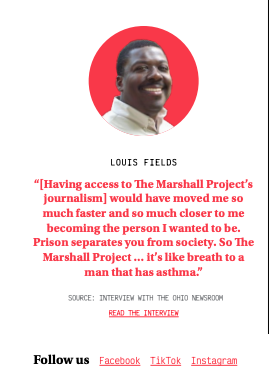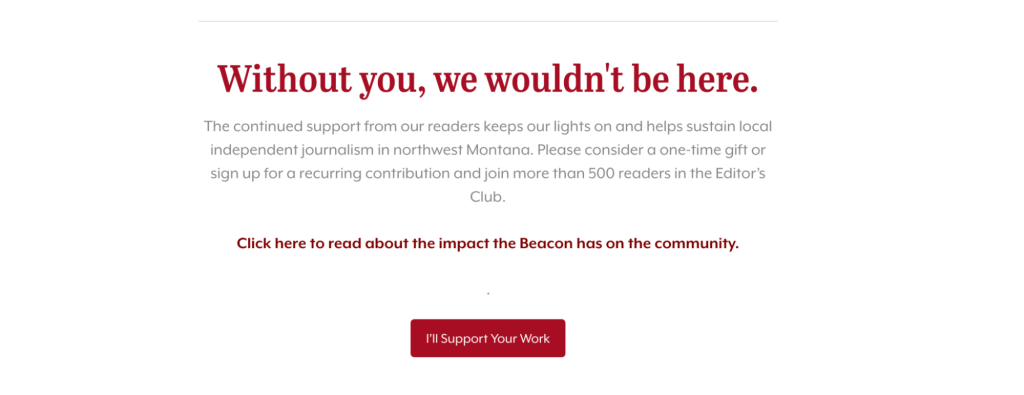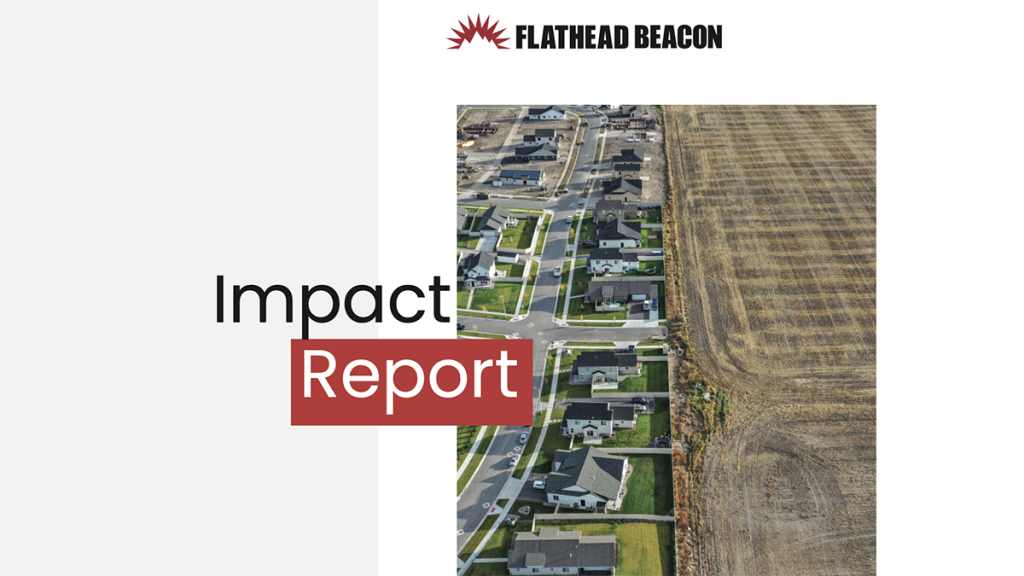
Tips for communicating your newsroom’s impact
Templates and lessons learned from the Flathead Beacon’s first report
After 16 years of printing weekly newspapers, the Flathead Beacon announced last year that it would transition away from print and focus entirely on publishing online. The Montana news outlet has continued to produce impactful journalism, but the leadership realized that they needed to find new ways to communicate that impact to their readers and potential funders – especially as philanthropy became a more significant player in their business model.
Working with the Innovation in Focus team, the Flathead Beacon developed a template for an impact report they can update each year. The goal was to create a structure that would give the Beacon’s entire team a common way to measure their growth and share their wins as they continue on their digital-first path.
We looked at examples of other newsroom’s impact reports, found ways to collaborate across the newsroom and established early plans for promoting the report. Here’s a link to their report and what we learned.
Choosing categories to include
As we considered what categories to include in the Beacon’s impact report, we looked to other newsrooms for inspiration. Some of those examples included the Baltimore Banner, Detroit Free Press, Tampa Bay Times, Marshall Project, Borderless and Sahan Journal. We also drew inspiration from Willamette Week, which sends weekly emails to its donors that include the impact of the news organization’s reporting.
Ideas we borrowed:
- Feature testimonials from community members
- Recognize ways (and how much money) the news organization’s foundation has contributed to the local community
- Show examples of powerful visual journalism over the past year throughout the report
- Highlight specific stories or beats that show the unique value of the news organization for this community
- Include metrics like page views and subscribers, but keep a larger focus on the qualitative and anecdotal data
- Note internships, fellowships and awards won by your staff
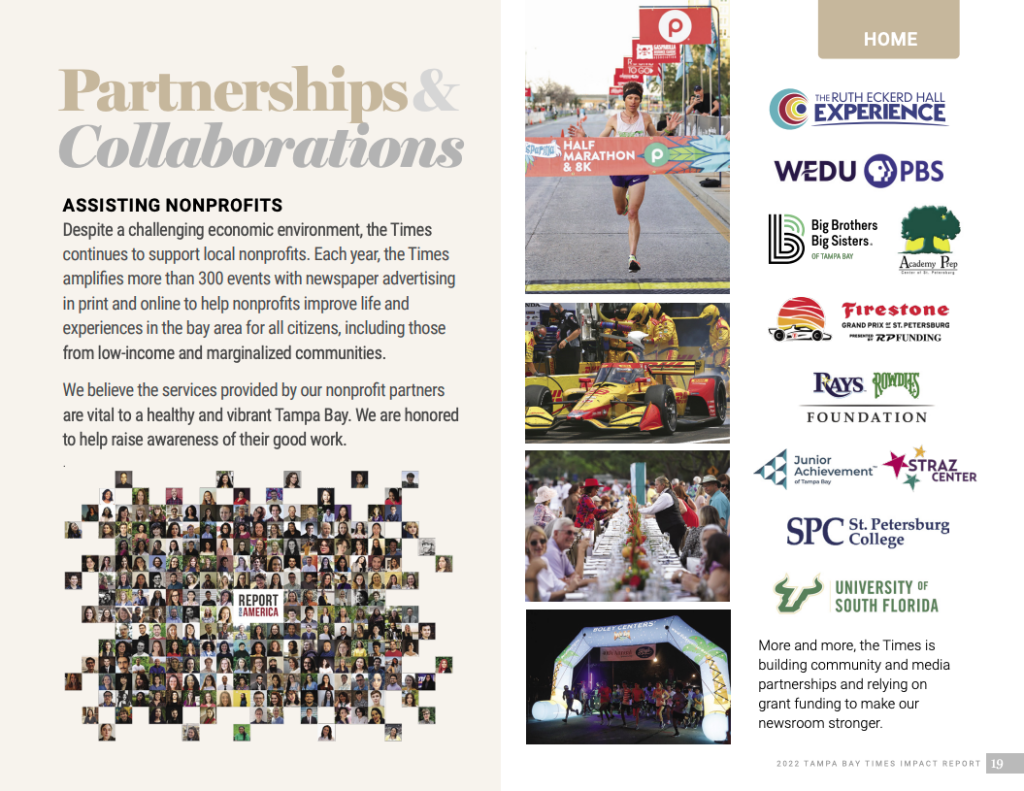
Here are some other questions we brainstormed through this process:
- How many local events has the Beacon sponsored?
- Do we have feedback from readers about how a story educated them on an issue?
- Was a Beacon story cited in a public meeting?
- Do we have photos that show the Beacon staff connecting with community members?
- What are we doing that no one else is doing/covering?
- How might we break down the biggest or most impactful stories by category? (See Borderless’ example of how they highlighted stories under “arts & culture” or “health & housing.”)
- What can we highlight about our staff? Are many of them people who are living in their local communities to report?
- Can we highlight any collaborative projects or republished stories?
- Did the Beacon help make some public information more accessible?
- How have we informed voters during election seasons?
- Which photos show the Beacon capturing emotional/impactful/powerful moments in our community? (See Tampa Bay’s page with just powerful visual journalism).
- Who are we featuring in our opinion section? Do we feature a variety of voices?
Here is the final outline and template we created for the Flathead Beacon’s first impact report.
Clarify the mission statement
One of our first steps was to write a tighter mission statement for the Flathead Beacon. This helped ground the Beacon’s impact report because part of “making a difference” in their community is following through on their mission and goals.
This also helped us prioritize which categories to include, especially in the sections where we identified which stories or beats to feature.
Involve reporters in sharing their impact
For the sections featuring impactful reporting, Editor in Chief Kellyn Brown asked reporters to write a column about their beat (environment, education, housing crisis, public lands and arts & entertainment).
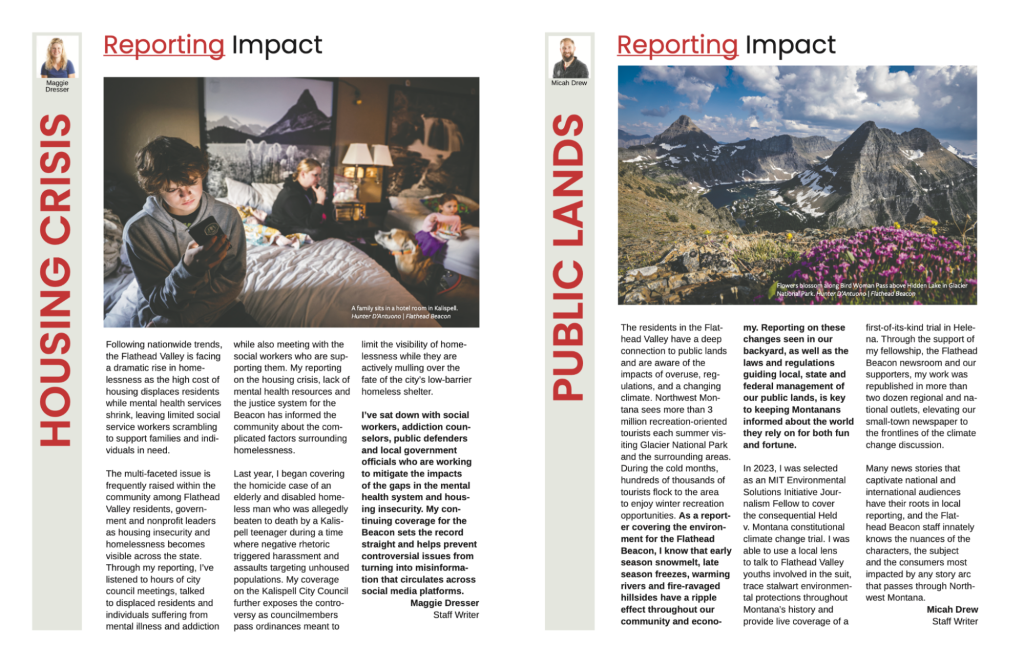
Kellyn first asked one reporter to write a column and used that as a template for other reporters. Each of the reporters was eager to participate, he said, and it was an opportunity for them to reflect on the impact they have on the community they cover.
Next year, he may also ask the newsroom’s photographer to write about the visual impact of his journalism. This was one of our biggest takeaways because we realized the power of getting buy-in from the whole newsroom when measuring and communicating impact.
Some examples of impact that the 2024 columns highlighted:
- Tristan Scott, managing editor, focused on the Beacon’s continued reporting on pollution from toxic mining byproducts — from following up on the tip to reporting a half-dozen and touring/photographing mines.
- Staff writer Denali Sagner wrote about covering a large geographic region and getting boots on the ground: “My education reporting for the Beacon has taken me from Libby to Browning to Kila, where I’ve highlighted innovative community college programs and spent hours in classrooms.”
- Staff writer Maggie Dresser emphasized a nuanced approach to reporting on the housing crisis and a commitment to combat misinformation.
- Staff writer Micah Drew’s reporting on public lands was an example of how the Flathead Beacon leans into local expertise to share stories that end up getting republished in more than two dozen regional and national outlets.
- Staff writer Mike Kordenbrock shared how the Beacon’s arts and entertainment reporting gives local artists and institutions a chance to showcase their work. “When my work is at its best, and most impactful, it plays off the sense of curiosity that we all need to maintain in order to live well,” Kordenbrock wrote.
Continuously updating the report
The goal now is to use this first report as a template to update each year. The Flathead Beacon identified a time in their editorial schedule that they have the capacity to work on this report, and they plan to update the next one in 2025. This timing also follows the typical award season in their state, so the report serves as a good follow up to that recognition.
Promoting the impact report
We have been brainstorming ways to promote the report in their communities. Flathead Beacon has shared the report on its homepage near the “Support Our Work” button, in the footers of stories as part of a call to action and on social media. Kellyn will also share the downloadable PDF with the sales team and any staff who apply for grants.
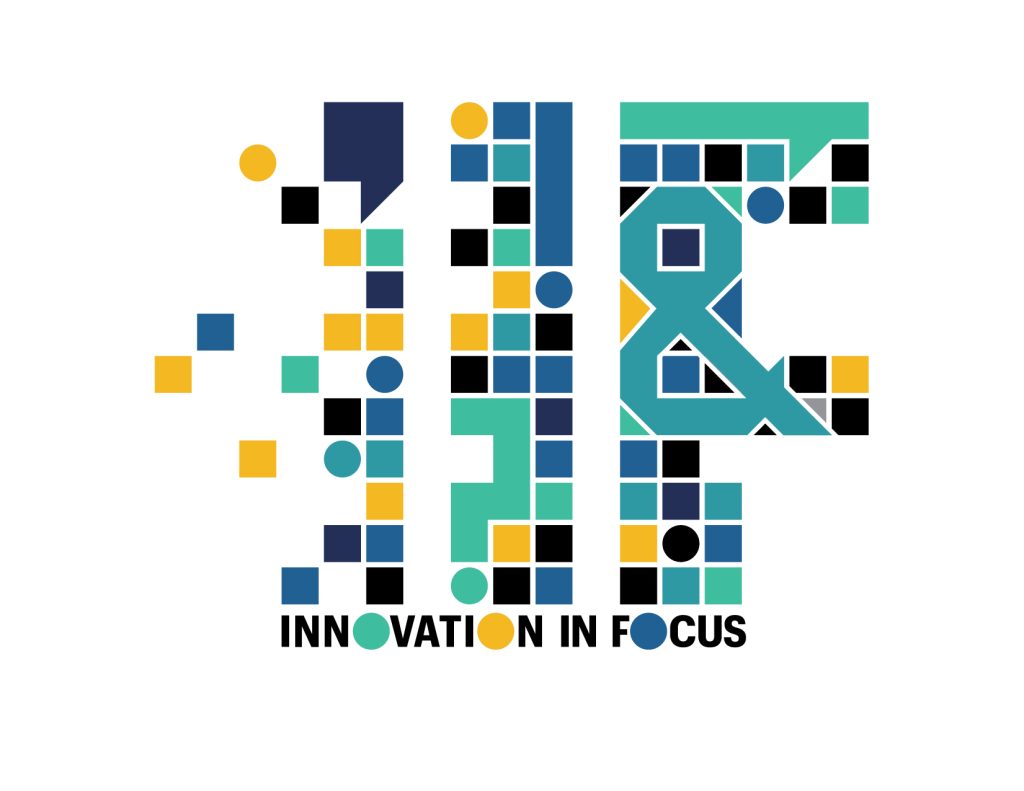
Sign up for the Innovation in Focus Newsletter to get our articles, tips, guides and more in your inbox each month!
Cite this article
Lytle, Emily (2024, Sept. 9). Tips for communicating your newsroom’s impact. Reynolds Journalism Institute. Retrieved from: https://rjionline.org/news/tips-for-communicating-your-newsrooms-impact/

